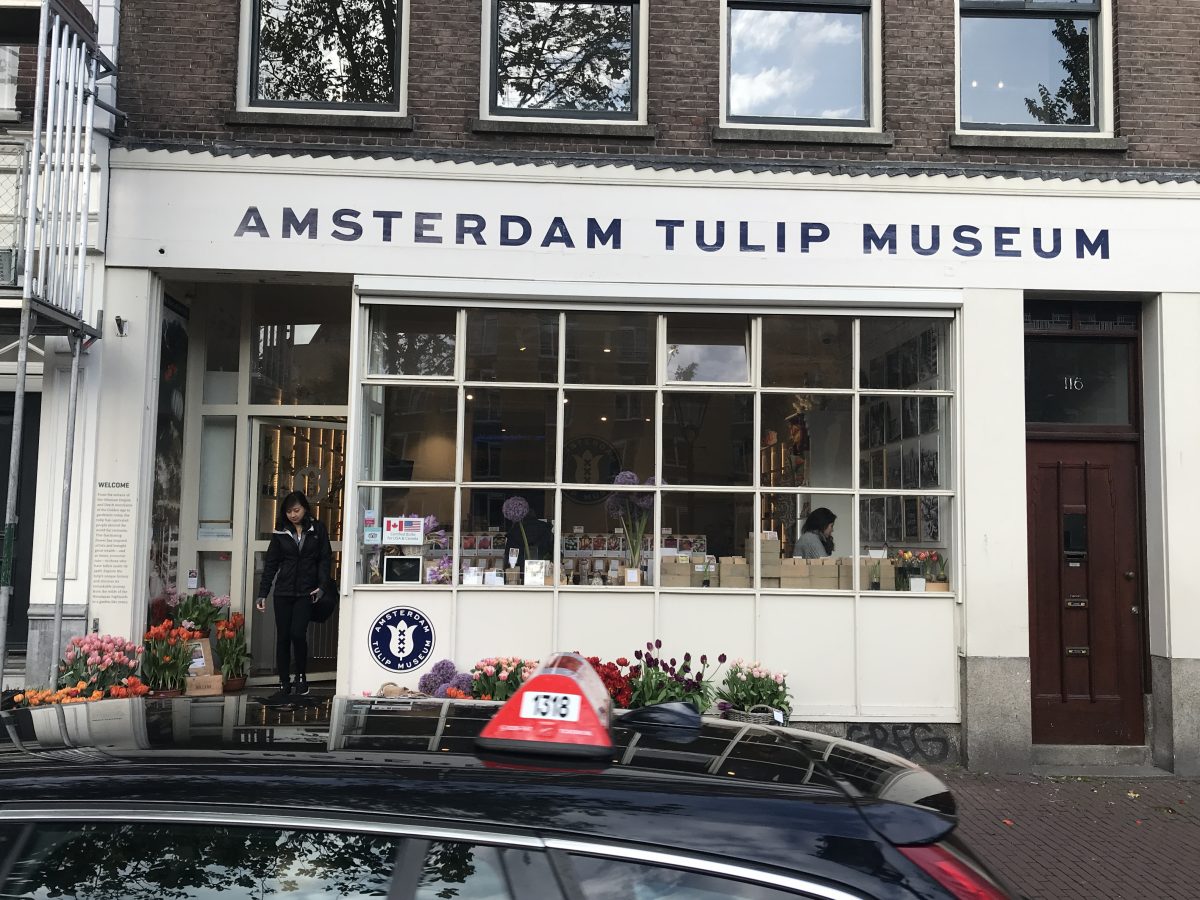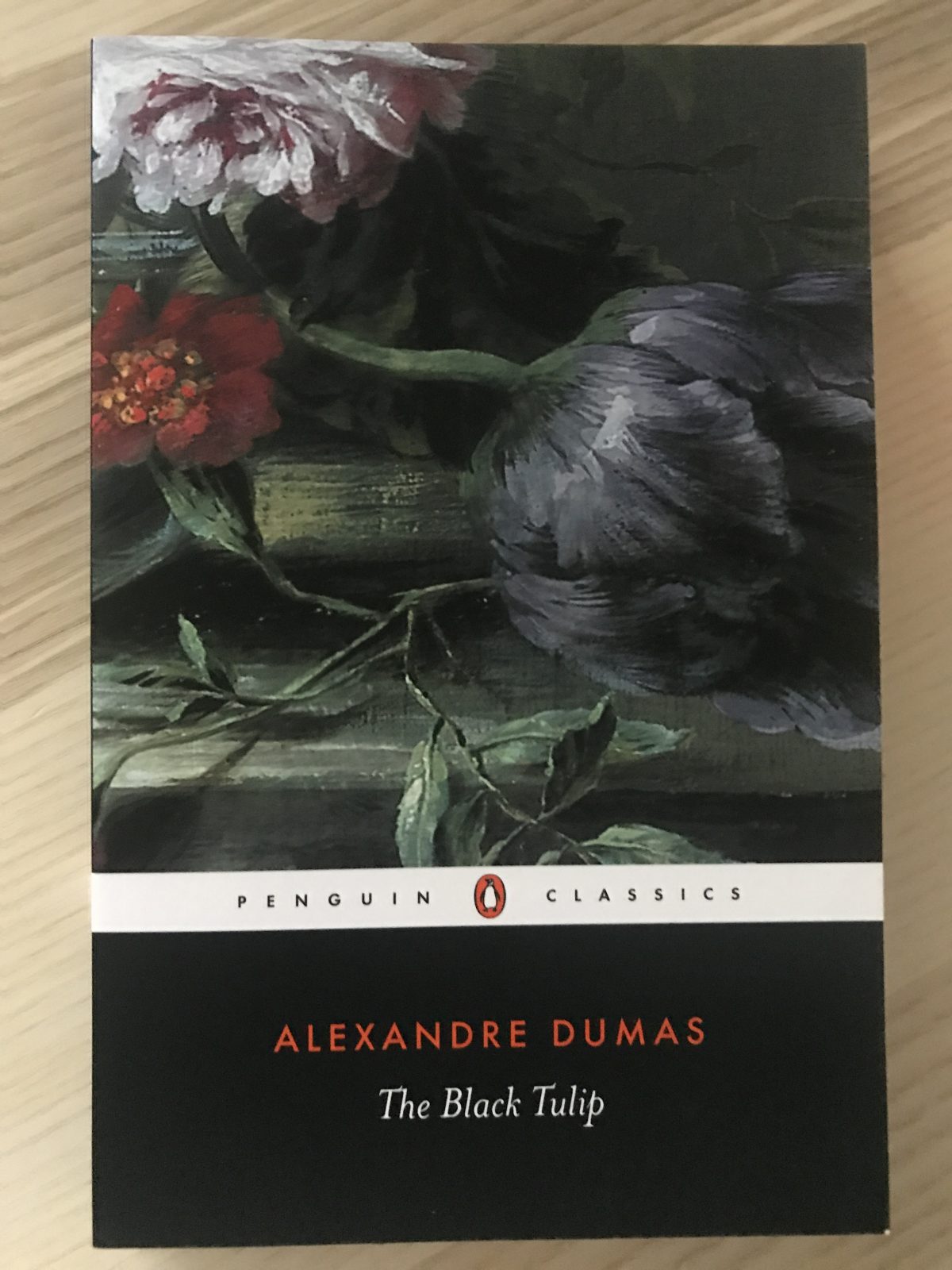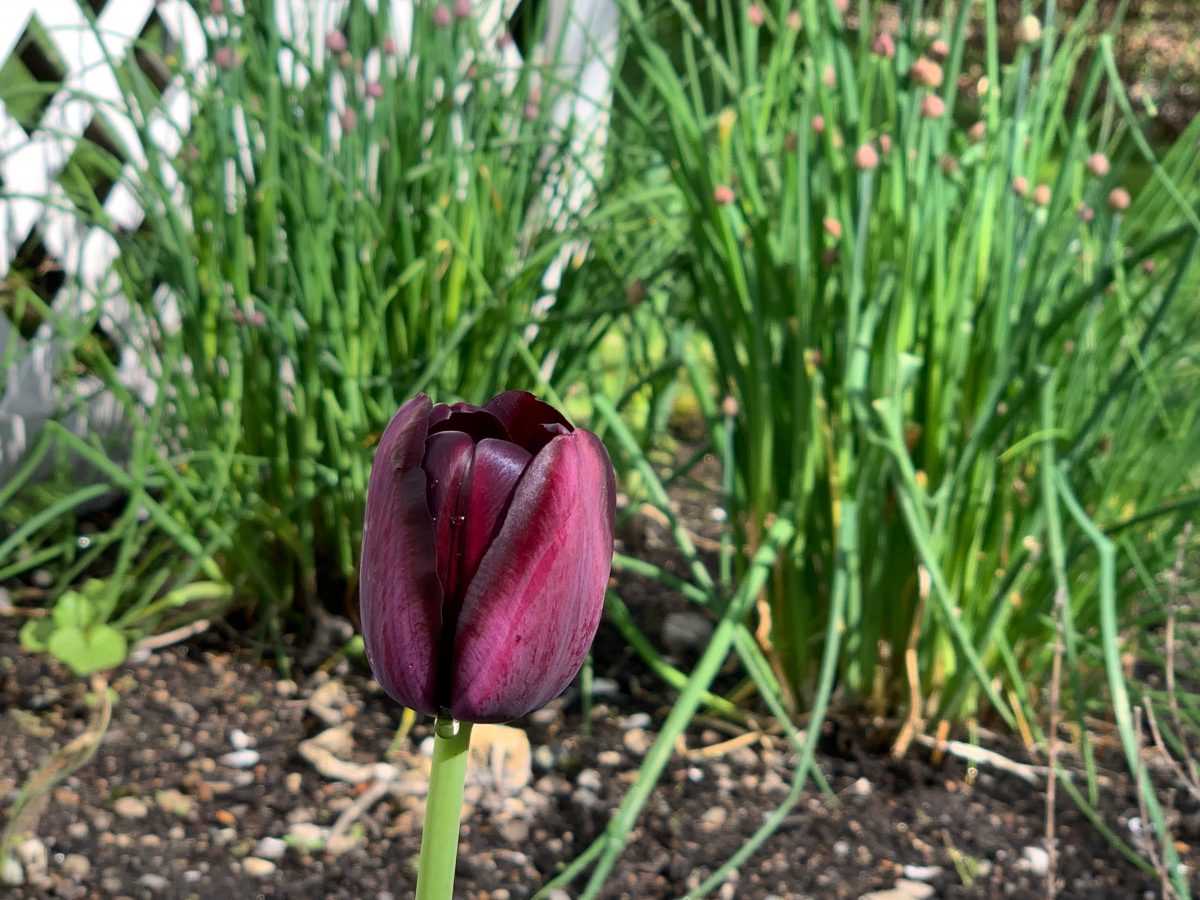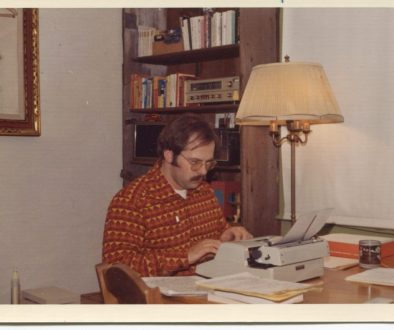A Tale of Two (Black) Tulips
It was a dark and stormy night. Well, actually it wasn’t, but it was a kinda cloudy overcast day in Amsterdam, a little on the cool side because it was October, dreary but not as unpleasant as a dark and stormy night would be. I was walking along the Prinzengrachet, or Prince’s Canal, doing some research for the novel I was writing. Yes, I concluded, my novel would be set here. I’d already passed Anne Frank’s House and Museum. Ahead was a handsome stone bridge over the canal, hundreds and hundreds of years old because everything in Amsterdam is hundreds and hundreds of years old. Even Amsterdam itself, which is like about at least a hundred thousand years old.
So as I walked on this stone bridge across the canal I saw a sign on a building that read, “Amsterdam Cheese Museum.” It looked just like a convenience store in America. And lo! – a few doors down was the “Amsterdam Tulip Museum.” Yes, dear reader, a tulip museum, but it too looked just like a store. In it front windows were tulips for sale, because that’s exactly what it was, a store that sold tulips. But once inside I discovered that in the back of the shop was a “tulip museum,” which one can visit if one feels like seeing more tulips and has five euros to spare. This “museum” phenomena can be explained by the fact that Amsterdam is so old that it doesn’t have stores, like they do in Omaha. It has museums that sell all kinds of old stuff because everything in Amsterdam is old. Old furniture. Old books. Old cheese.

I walked up and down the aisles, appreciating the beautiful tulips. They were, of course, all very similar except for their colors, and actually they didn’t look all that old, at least to me. I thought the colors made them look youthful and vibrant. And then, what should my wandering, browsing eyes fall upon but a black—yes, a black tulip. At that very moment a novel came rushing out from where it had been parked in my memory, and I knew I just had to take a black tulip plant home for our garden.
I went up to the counter and inquired about buying the tulips and learned two things from the helpful, English-speaking saleslady. One, they are not plants like we usually think of a plant, but rather a bulb, like we think of a potato. Two, due to all the international kerfluffles about illegally importing undesirable stuff from alien countries like, you know, Burmese pythons and moths and viruses, you have to buy a tulip especially grown for export. I thought that was a terrific idea on their part and applauded their business acumen. I said, “I’ll take a dozen.”
Listening attentively to this exchange was an attractive young blonde woman. She asked me where I would be planting them in a nice clear Midwestern accent, to which I replied by asking where she was from. Chicago, she said, and asked why I was buying black tulip, to be precise. I told her I was born in Chicago, well, pretty close anyway, and so asked what she did there, and she said she was an English major at Northwestern. I told her I had majored in English too, and explained that I was a writer here in Amsterdam to work on a new novel. She asked what it was about and I said, smiling as kindly as I could, that if I told her I would have to kill her, which made her laugh. (Whew.) I asked what she was currently reading (a favorite question I ask total strangers in tulip museums all the time) and she told me. I can’t remember the title now, but it was worthy. I asked if this was her first visit to Amsterdam and she said yes, her first out of the country, as she was doing her study-abroad semester.
I told her I loved France with all my heart and had on two previous visits gone to see the Château de Monte-Cristo, where the great French author Alexandre Dumas (père) had lived (and was now a museum). I told her one of his last novels was entitled The Black Tulip, set in the mid-1600s in Amsterdam at a time when tulips were so highly valued that they were actually the coin of the realm, so to speak, for trade and commerce in the Netherlands. One of the characters is trying to grow a black tulip to win a bunch of money from William of Orange, the ruler at the time. That was how valuable tulips were back then.

All in all we had a delightful conversation. She took out a notebook and jotted down the title of M. Dumas’ novel, then went about buying some tulip bulbs (not black) for herself. We shook hands and I departed the museum – er, shop – and headed down Prinzengracht street to snap mise en scène pictures for my soon-to-be fabulously successful novel.
I had trudged along the canal for several hundred feet when it dawned on me that I had failed to mention my Nathaniel Hawthorne Flowers trilogy to my young acquaintance. I stopped of a sudden to contemplate my marketing faux pas, first saying “c’est la vie” to myself, which quickly turned to “Merde!” then back and forth again until I resolved to return to the tulip museum. I would chat up the young lady and hopefully convince her to read my books, too. But of course she had already departed, on her way, I hoped, to bookstore for a copy of The Black Tulip.
All for one and one for all, Alexandre.

Suggestions for further reading: my blog posts from Fictional Cafe on Dumas’ estate and a review of The Black Tulip.




